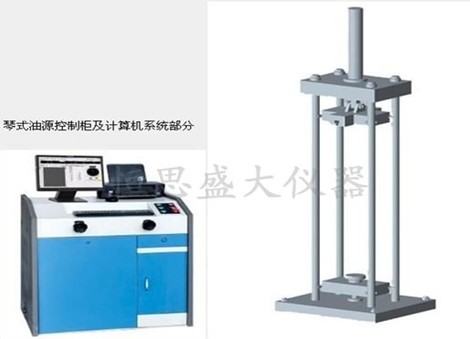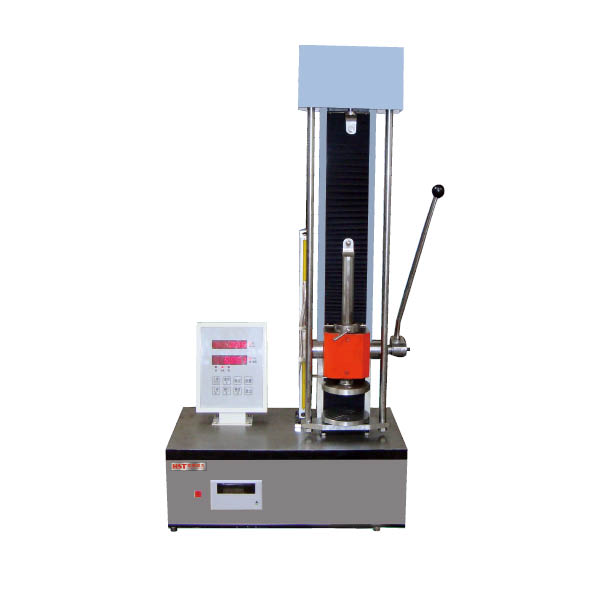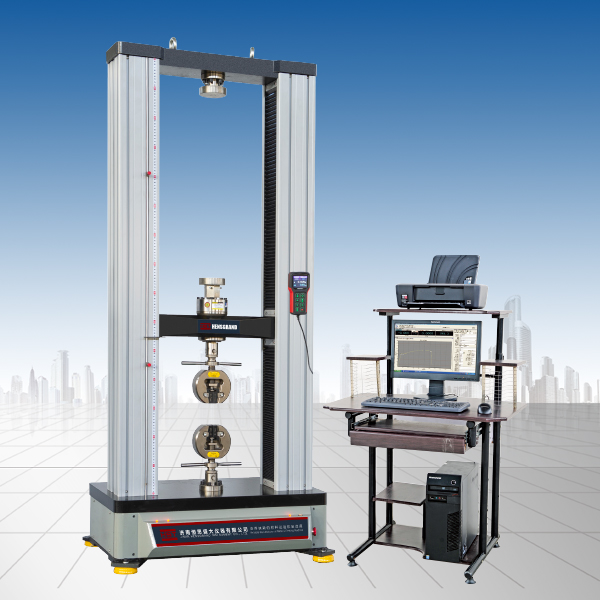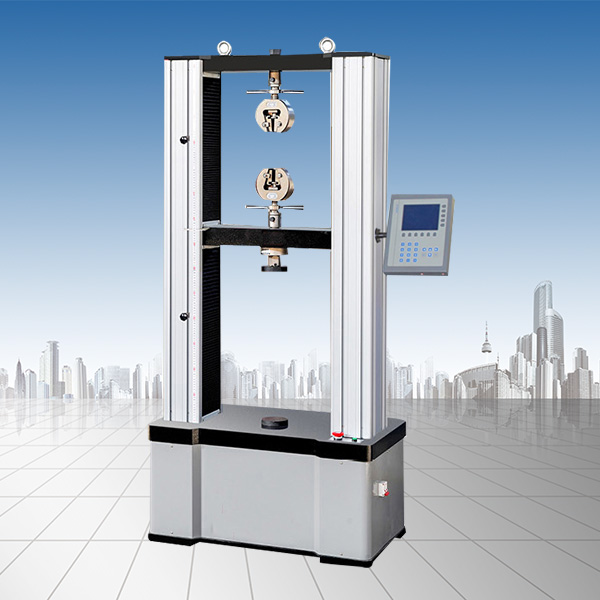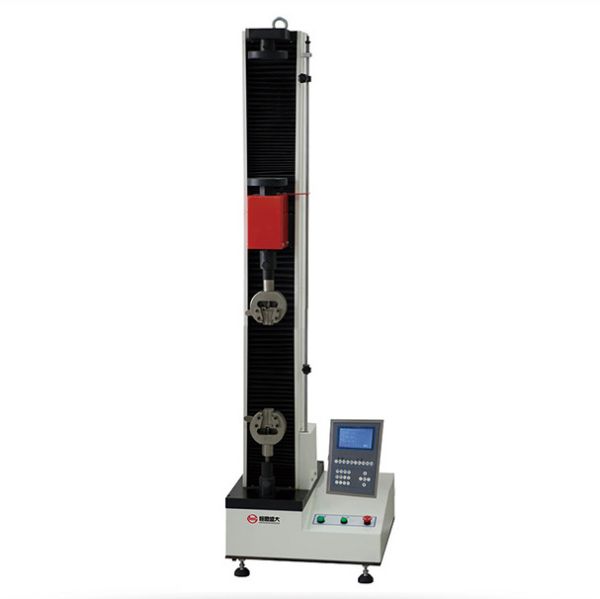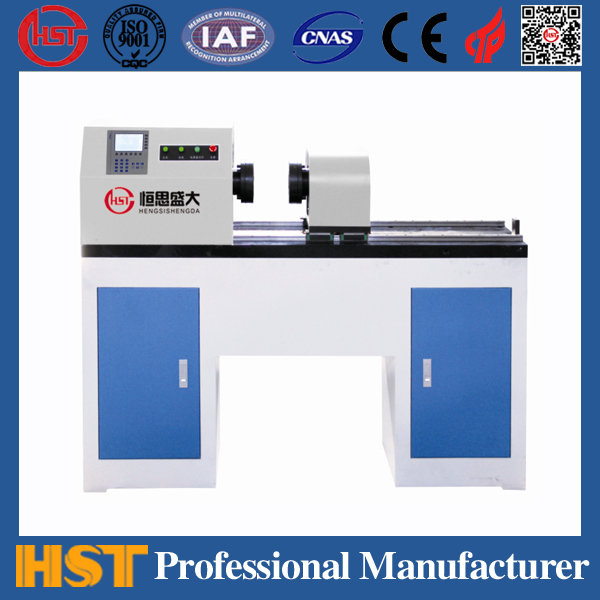Company News
How to distinguish ABS, PE, PP, and PVC plastic materials
Release time:2018-11-23 source:Jinan Hengsi Shanda Instrument Co., Ltd. Browse:
The difference between ABS, PE, PP, PVC plastic materials
PP is polypropylene.
ABS is a copolymer of acrylonitrile, butadiene and styrene.
PET polyethylene terephthalate.
PE is polyethylene.
PVC is polyvinyl chloride.
PEP is a copolymer of both polyethylene glycol PEG and propylene oxide PO).
①Polid vinyl chloride (PVC) is a type of plastic used in construction. The density of rigid polyvinyl chloride is 1.38~1.43g/cm3, with high mechanical strength and good chemical stability. ② Polyethylene (PE) ③ Polypropylene (PP) The density of polypropylene is small among all plastics, about 0.90. Polypropylene is often used to produce building products such as pipes, sanitary ware. ④Polystyrene (PS) Polystyrene is a colorless transparent plastic similar to glass. ⑤ABS plastic ABS plastic is a modified polystyrene plastic composed of three components based on acrylic (A), butadiene (B) and styrene (S).
PS: Polystyrene
It is a colorless and transparent plastic material. It has a glass transition temperature above 100 degrees Celsius, so it is often used to make various disposable containers that need to withstand the temperature of boiling water, as well as disposable foam lunch boxes, etc.
http://zh.wikipedia.org/wiki/Image:Polystyrene.png
PP: Polypropylene
It is a semi-crystalline thermoplastic. It has high impact resistance, strong mechanical properties, and resists corrosion of various organic solvents and acid-base. It has a wide range of applications in the industry and is one of the common polymer materials. Australian coins are also made of polypropylene.
Structural formula: http://zh.wikipedia.org/wiki/Image:Polypropylene_structure.png
PE: Polyethylene
It is one of the commonly used polymer materials in daily life, and is widely used in the manufacture of plastic bags, plastic films, and milk buckets.
Polyethylene is resistant to a variety of organic solvents and corrosion by multiple acids and alkalis, but is not resistant to oxidative acids, such as nitric acid. Polyethylene is oxidized in an oxidizing environment.
Polyethylene can be considered transparent in a thin film state, but when there is a large number of crystals inside it, strong light scattering will occur and opaque. The degree of polyethylene crystallization is affected by the number of branches and chains. The more branches, the more difficult it is to crystallize. The crystal melting temperature of polyethylene is also affected by the number of branches and chains, and is distributed from 90 degrees Celsius to 130 degrees Celsius. The more branches and chains, the lower the melting temperature. Polyethylene single crystals can usually be prepared by dissolving high-density polyethylene in an environment above 130 degrees Celsius in xylene.
Structural formula: - CH2 - CH2 - CH2 - CH2 - CH2 - CH2 - CH2 - CH2
ABS: It is a synthetic plastic of acrylonitrile, butadiene and styrene
The graft copolymerization products of three monomers: acrylonitrile, butadiene and styrene are named after the letters of their English names. It is a resin with high strength, good toughness and excellent comprehensive performance. It has a wide range of uses and is often used as an engineering plastic. In industry, polybutadiene latex or styrene butadiene rubber with low styrene content is mostly produced by grafting and copolymerization with a mixture of two monomers. In fact, it is often a mixture of butadiene-containing graft polymers and acrylonitrile-styrene copolymer SAN or AS. In recent years, styrene and acrylonitrile have been used to first copolymerize two monomers, and then mixed with grafted copolymerized ABS resin in different proportions to produce various ABS resins suitable for different uses. Industrial production began in the United States in the mid-1950s.
Industrial production methods can be divided into two categories: one is to mechanically blend polybutadiene or styrene butadiene rubber and SAN resin on a roller, or blend two latexes and then copolymerize; the other is to add styrene and acrylonitrile monomer to styrene butadiene or styrene latex for emulsion graft copolymerization, or mix with SAN resin in different proportions.
Structure, Properties and Applications In ABS resin, the rubber particles are dispersed in the continuous phase of SAN resin. When impacted, the crosslinked rubber particles bear and absorb this energy, dispersing the stress, thereby preventing the crack from developing, thereby improving tear resistance.
The purpose of graft copolymerization is to improve the compatibility and adhesion of the rubber particle surface with the resin phase. This is related to the amount of free SAN resin and the composition of SAN resin grafted on the rubber main chain. The difference in acrylonitrile content in these two resins should not be too large, otherwise the compatibility will be poor, which will lead to cracks in the interface between the rubber and the resin.
ABS resin can be processed into plastic by injection molding, extrusion, vacuum, blow molding and rolling, and can also be processed by secondary processing by machinery, bonding, coating, vacuum evaporation and other methods. Due to its excellent comprehensive performance and wide range of uses, it is mainly used as engineering materials and can also be used in home living equipment. Because of its good oil resistance, acid, alkali, salt and chemical reagent resistance, and its electroplating properties, it has good gloss, light specific gravity and low price after plating on the metal layer, and can be used to replace certain metals. Many varieties such as self-extinguishing and heat-resistant can also be synthesized to suit various uses.
PET: Polyethylene terephthalate
Polymers of terephthalic acid and ethylene glycol. The abbreviation of PET is mainly used to manufacture polyethylene terephthalate fibers in China's trade name is polyester. This fiber has high strength and good fabric wear performance. It is currently a variety of synthetic fibers. In 1980, the world's output was about 5.1 million tons, accounting for 49% of the world's total synthetic fiber production.
Properties The high symmetry of the molecular structure and the rigidity of the p-phenylene chain make this polymer have the characteristics of high crystallinity, high melting temperature and insoluble in general organic solvents, with a melting temperature of 257-265℃; its density increases with the increase of crystallinity, and the density of the amorphous state is 1.33 grams/cm^3. After stretching, due to the increase of crystallinity, the density of the fiber is 1.38-1.41 grams/cm^3. From X-ray research, it was calculated that the density of the complete crystal is 1.463 grams/cm^3. The glass transition temperature of the amorphous polymer is 67°C; the crystalline polymer is 81°C. The fusion heat of the polymer is 113~122 jug/g, the specific heat capacity is 1.1~1.4 jug/g., the dielectric constant is 3.0~3.8, and the specific resistance is 10^11 10^14 ohms.cm. PET is insoluble in ordinary solvents and is only soluble in some highly corrosive organic solvents such as phenol, o-chlorophenol, m-cresol, and trifluoroacetic acid mixed solvents. PET fibers are stable to weak acids and weak bases.
Application is mainly used as raw materials for synthetic fibers. Short fibers can be blended with cotton, wool, and linen to make clothing textiles or interior decoration cloths; filaments can be made into clothing silk or industrial wires, such as filter cloth, tire cords, parachutes, conveyor belts, safety belts, etc. The film can be used as a film base and is used for photosensitive films and audio recording tapes. Injection molded parts can be used as packaging containers.
POM: Polyformaldehyde
The scientific name is polyoxymethylene, which is a thermoplastic crystalline polymer. The English abbreviation is POM. The structural formula is CH -O. Before 1942, most of the polyoxymethylene glycol HO CHOH obtained by formaldehyde polymerization was low in polymerization and easily heat-depolymerized. Among them, =8-100 is paraformaldehyde; more than 100 is -polyformaldehyde. Around 1955, DuPont, the United States obtained formaldehyde homopolymer, that is, homopolyformaldehyde, and the trade name is Delrin. The American Celanes Company started from paraformaldehyde and produced a copolymer with a small amount of dioxane or ethylene oxide, namely copolymerformaldehyde, with the trade name Celcon.
Properties Polyformaldehyde can easily crystallize with a crystallinity of up to 70%; high-temperature annealing can increase the crystallinity. The melting temperature of homopolyformaldehyde is 181℃ and the density is 1.425 grams/cm. The melting point of copolyformaldehyde is about 170℃. The glass transition temperature of homopolyformaldehyde is -60℃. Phenol compounds are solvents of polyformaldehyde. From the study of melt index, it is known that the molecular weight distribution of homopolyformaldehyde is relatively narrow. In addition to strong acids, oxidants and phenols, copolyformaldehyde is very stable to other chemical reagents, while homopolyformaldehyde is also unstable to concentrated ammonia water. The stably treated polyformaldehyde can be heated to 230°C and still has no significant decomposition. Polyformaldehyde can be molded by compression, injection, extrusion, blow molding, etc., with a processing temperature of 170-200℃; it can also be processed by machine tools and can also be welded. The product is light, hard, rigid and elastic, stable in size, small friction coefficient, low water absorption, good insulation performance, and resistant to organic solvents; it can be used in a wide temperature range -50-105℃ and humidity range; it keeps its performance unchanged under the action of various solvents and chemical reagents, as well as under large loads and long-term cycling stresses.
PVC: Polyvinyl chloride
It is a polymer material that uses a chlorine atom to replace a hydrogen atom in polyethylene.
Polyvinyl chloride is characterized by flame retardant and is therefore widely used in fire-resistant applications. But polyvinyl chloride releases hydrochloric acid and other toxic gases during combustion.
Structural formula: - CH2 - CHCl - CH2 - CHCl - CH2 - CHCl -
Recommended productsPRODUCTS


















